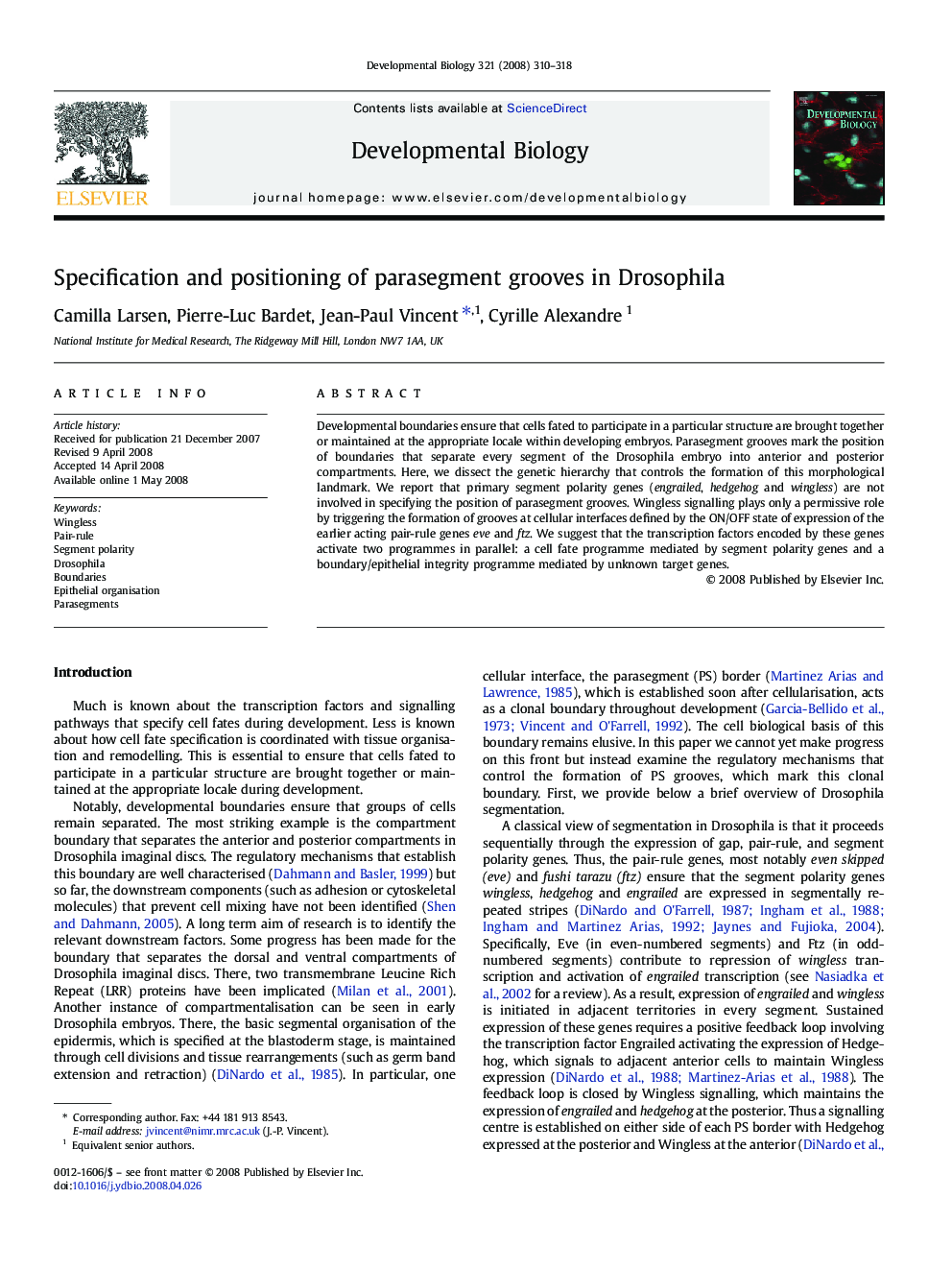| Article ID | Journal | Published Year | Pages | File Type |
|---|---|---|---|---|
| 2174358 | Developmental Biology | 2008 | 9 Pages |
Developmental boundaries ensure that cells fated to participate in a particular structure are brought together or maintained at the appropriate locale within developing embryos. Parasegment grooves mark the position of boundaries that separate every segment of the Drosophila embryo into anterior and posterior compartments. Here, we dissect the genetic hierarchy that controls the formation of this morphological landmark. We report that primary segment polarity genes (engrailed, hedgehog and wingless) are not involved in specifying the position of parasegment grooves. Wingless signalling plays only a permissive role by triggering the formation of grooves at cellular interfaces defined by the ON/OFF state of expression of the earlier acting pair-rule genes eve and ftz. We suggest that the transcription factors encoded by these genes activate two programmes in parallel: a cell fate programme mediated by segment polarity genes and a boundary/epithelial integrity programme mediated by unknown target genes.
